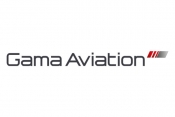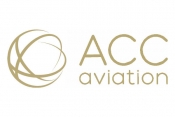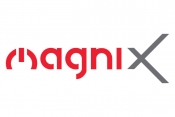Aviation finance post Covid? – ACC Aviation explores the options
Wednesday 18th August 2021
As airlines recover from the effects of the long and protracted pandemic, the future aviation financing they seek - for fleet updates and network expansion - will most likely come from capital market funding, through debt and equity funds backed by private equity, with Export Credit and Bank Debt emerging as second and third suitable avenues, highlights ACC Aviation.
A recent online /LinkedIn survey by the UK headquartered global aviation services consultancy, asking: “What source of funding will dominate aircraft finance post-Covid?” saw 46% of respondents concurring. A total 28% agreed export credit financing would increase, with just 3% highlighting other options.
The good news is that the aviation lender and investor community is re-engaging with airlines, cites ACC Aviation. More transactions are being pursued as capital starts to flow back into the industry and investors and lessors are actively seeking new transaction opportunities. The overriding tone from the OEMs is confidence.
Bank debt is available (primarily) for Tier 1 airlines. As the market recovers, however, we can expect to see increased availability for debt finance with debt capital markets remaining strong. That’s the view of ACC Aviation’s Viktor Berta, newly appointed VP Aircraft Finance Advisory, who believes that with a healthy co-existence between the two, complemented by other alternative sources, it will be easier for a broader spectrum of aviation investments to get financed, post-Covid.
Aviation finance expert Viktor Berta highlights :
Capital markets’ demand for Asset Backed Security (ABS) bonds and a wealth of bank debt availability to finance aircraft was already inflating the market pre Covid. Deal margins thinned on the back of a healthy appetite for aviation assets. Such was the level of investor demand, he notes, up to 50 entities were bidding on certain RFPs.
Pre-pandemic, lessors and appraisers were already reassessing certain assumptions on their pricing models in preparation for the adjustment to values of older vintages as new technology alternatives continued to gain ground. The expected return of the B737MAX was seen by many as the event to trigger the realignment in values in this segment of the market. The investment and financing community, however, was not expecting an imminent correction.
This was evident at last year’s ISTAT Americas’ conference in Austin, TX, where it was suggested that a disruption in investment and financing opportunities was just temporary – a geographically contained disruption. However, when it became evident that the issues caused by pandemic were serious, activity between airlines, lessors and lenders stalled, urging investors and financiers to swiftly reassess their exposures and assumptions.
Against this backdrop, most banks temporarily withdrew from aviation finance while others made the decision to completely abandon this line of business. As the wave of Covid restrictions continued, airlines defaulted on aircraft leases and attached loans, necessitating temporary payment holidays.
As a result, airlines, lessors and banks have had to work together as a priority to restructure their financing and leasing arrangements – many previous agreements being no longer sustainable under Covid-19 market conditions.
The appraiser community has had to take on a herculean task of assessing and reassessing the market realities and adjusting their valuations and projections accordingly.
American legacy carriers, European LCC’s and other global Tier 1 operators have largely successfully managed to raise fresh capital from their unencumbered assets through mortgage loans and SLB transactions; while opportunistic lessors and investors have started looking at ways to benefit from the pandemic’s impact on aviation. This includes buying aircraft at discounted price levels and increasing lease factors on SLB transactions (from pre-pandemic levels).
Bankers and airlines negotiating financing agreements are focusing on navigating ways to restructure loans to help airlines re-emerge post-Covid, at the same time improving the bank’s chances of recovering exposures.
Aviation finance landscape altered dramatically
Temporary measures put in place during the first wave of the virus often called for further extensions or new negotiated arrangements. Final settlements, discounted buy-outs and refinancing of underwater facilities, as a result, became more commonplace.
As the industry rebuilds slowly, large domestic markets, such as the USA and China, are well on their way to recovery - with several domestic markets closing in on or surpassing pre-pandemic levels. This is instigating a ripple effect of improved market conditions.
ACC Aviation is eager to help clients explore new opportunities in aviation finance. Its range of expertise across aviation consulting, ACMI leasing, and aircraft charter, extends to holistic aircraft transaction solutions covering asset management, financial advisory, and technical services too.
With a wealth of experience assisting airlines, banks and lessors in situations involving repossessions, remarketing, business recovery plans and financial restructuring, we are well placed to support the aviation industry through these challenging times, says Viktor, whether it’s helping restructuring options or identifying new sources of capital.
Through ACC’s new financial advisory the business can run valuations of aircraft, slots and other assets as potential collateral, supporting airlines in managing the capital raising process and supporting investors and lenders in resolving distressed situations too.
For more information about ACC Aviation’s full range of services or to enquire about specific requirements contact +971 4 250 0373.
Latest News

Tuesday 4th March 2025
Gama Aviation sees increasing business aviation traffic through Sharjah International Airport









Get Social
Twitter Linked in Facebook Instagram